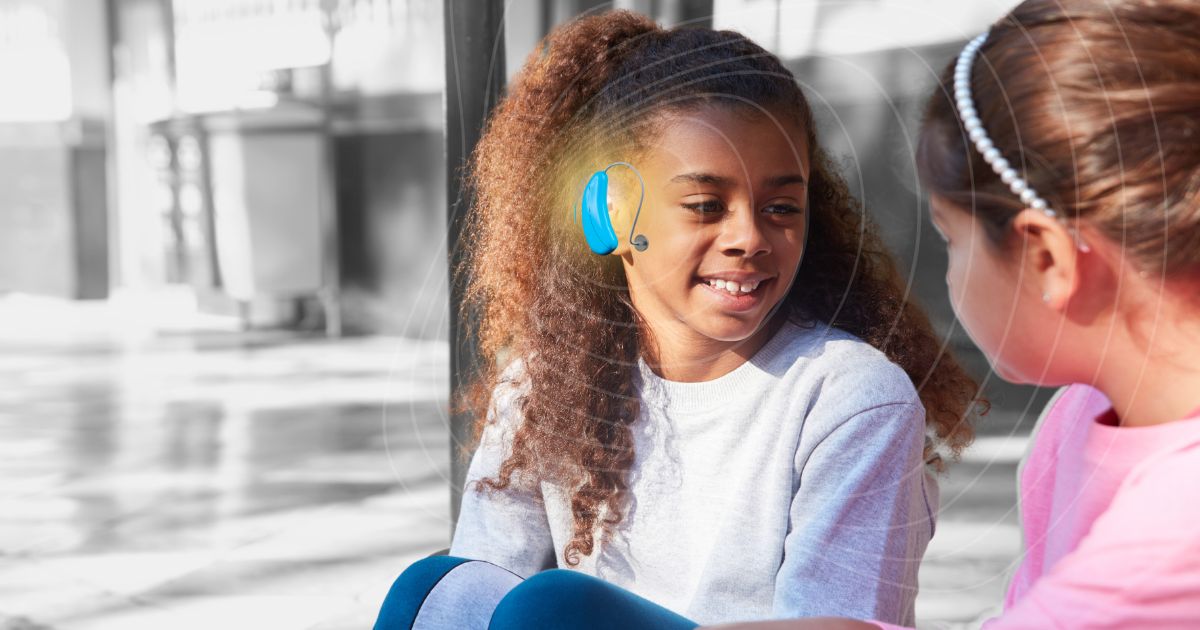The listening bubble refers to the area around a hearing impaired child where speech is sufficiently clear for comprehension. Its size depends primarily on degree of hearing loss and whether hearing technology adequately compensates to access normal acoustic environments.
When parents speak from inside this bubble, children can hear, absorb language and learn effectively. But falling outside it prevents adequate hearing and verbal development regardless of intent or repetition. Fluctuating accessibility frustrates families struggling to communicate despite children sometimes appearing to hear well. Audiologists must therefore equip families with realistic expectations of their child’s functional listening space to maximize linguistic exposure.
Typical children effortlessly understand normal conversational levels at over 20 feet, easily overhearing discussions not directly including them. But for hearing impaired kids, that distance shrinks to only few feet without appropriate hearing aids or cochlear implants. Suboptimal fittings or noncompliance with wearing technology constricts the bubble, potentially severely impeding acquisition of speech and language during critical periods of auditory brain development.
How Can We Expand Listening Bubbles?
When children’s hearing bubbles remain distressingly small, what options help increase scope for accessing more ambient language? If properly programmed hearing aids still don’t provide sufficient range, augmenting via remote microphone technologies like frequency modulated (FM) systems becomes necessary even for toddlers. Wider bubbles ensure classrooms, playgrounds and other spaces don’t deprive children of irreplaceable incidental listening opportunities.
What About the Listening Bubble in School?
Listening effectively in academic settings proves absolutely essential for educational progress. But expectations must expand beyond merely hearing instructors to also include fellow students. Class peer interactions contribute greatly toward comprehension, analytical and communicative competencies. So while personal teacher microphones are crucial, additional discussion microphones facilitate participating in collective learning.
Instead of single transmitter models, classrooms ideally incorporate networked systems with teacher mics and additional units passed sequentially among speaking students. This design lets hearing impaired children fully engage with everycontribution rather than missing input from classmates seated farther away. Equipping peers to wait before sharing until they can access the microphone demonstrates inclusive behaviors that help normalize hearing differences.
What Do Children Need to Know About the Listening Bubble?
Absolutely! Students deserve direct instruction about hearing loss implications like shrinking listening bubbles to build self-advocacy skills for handling difficulties. Children noticing conversations happening outside their auditory range need coaching on respectfully interrupting to request moving closer and clarifying without shame. They must learn asserting hearing needs, despite social discomforts, prevents compounding struggles that hamper long-term success.
We also share responsibility for broadening acceptance of hearing assistive equipment among normally hearing students. Bullying and teasing still discourage many from visibly utilizing essential technologies, fearing stigma. Patient education helps foster peer allyship and reduces harmful ignorance about disabilities. Hearing impaired students will progress farther supported by compassionate learning communities sensitive to auditory disabilities.
Jane Madell, PhD, has a consulting practice in pediatric audiology. She is an audiologist, speech-language pathologist, and LSLS auditory verbal therapist, with a BA from Emerson College and an MA and PhD from the University of Wisconsin. Her 45+ years experience ranges from Deaf Nursery programs to positions at the League for the Hard of Hearing (Director), Long Island College Hospital, Downstate Medical Center, Beth Israel Medical Center/New York Eye and Ear Infirmary as director of the Hearing and Learning Center and Cochlear Implant Center. Jane has taught at the University of Tennessee, Columbia University, Downstate Medical School, and Albert Einstein Medical School, published 7 books, and written numerous books chapters and journal articles, and is a well known international lecturer.
**this piece has been updated for clarity. It originally published on December 30, 2014








Dr. Madell;
Re: The size of the listening bubble depends on the degree of hearing loss and the use and quality of the technology.
The size of the listening bubble is affected by more than just hearing capability and assistive listening technology. Room acoustics and room noise play a very important part in the Signal to Noise equation (SNR). The size of the bubble is actually defined by SNR. In a room environment, it’s the “N” that plays the most havoc. And “N” has signal reverberation (acoustics) and noise as its sources. Maximizing the size of the listening bubble is achieved by good acoustic design to minimize the noise complemented by minimizing the acoustic distance of the signal, i.e. from the talker to the ear. In the case of a person with hearing loss using hearing devices, this is best accomplished through to use of a IEC60118-4:2006 compliant hearing loop system and an ANSI 3.22 compliant hearing aid telecoil system.